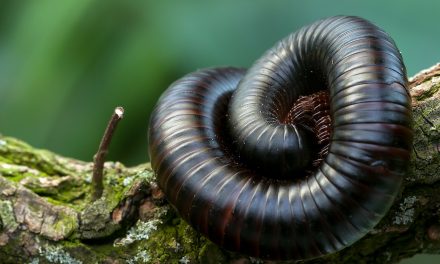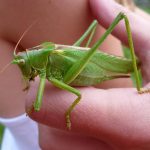It has been known for a long time that at least some insects have the ability to hear. There are a variety of different insects that can hear, and that make sounds to be able to produce signals that allow them to communicate with one another. Many insects have hearing organs on different parts of their bodies, like the thorax, abdomen, and head.
This might leave you wondering which insects are able to hear, and this is a question that we are going to answer for you here. Not all insects will have the ability to hear things, but there are a select few that can. In this article, we are going to tell you which insects can hear and how they can do so.
Have Insects Always Been Able To Hear?
Insects haven’t always been able to hear. Interestingly, when they first appeared around 400 million years ago, there were no insects that had the ability to hear. More recently, there are some insects that have evolved to be able to hear, though most of them cannot.
Out of the 30 major different insect orders, only nine of them include some insects that have the ability to hear. In many of these categories, the hearing of insects has evolved more than once. Interestingly, the hearing of the moth and butterfly has evolved at least six times.
Which Insects Can Hear?
Some of the insects that can hear include crickets, grasshoppers, katydids, cicadas, bugs, butterflies, moths, and flies. There are not many insects that can here, but these are some of the few that can. We will list the groups that these insects belong to below and explain more about each one’s ability to hear.
Orthoptera – Crickets, Grasshoppers, and Katydids
The orthoptera have ears that are able to perceive sounds, and they have very well-established hearing. The ears of katydids and crickets can be found on their first walking legs, and the ears of grasshoppers can be found on the first segment of the abdomen.
Homoptera – Cicadas
Cicadas are known for the intensity of sound that many different species are able to produce, and the well-developed ears that they have. Their ears can be located on the first segment of the abdomen.
Heteroptera – Bugs
A type of heteropteran that has the ability to hear is the water boatman. If you didn’t already know, a water boatman is a type of small aquatic insect, and they actually have an ear on the first segment of the thorax.
Lepidoptera – Butterflies and Moths
Many different types of butterflies have ears that are mostly sensitive to sound frequencies between 500 Hz and 6 kHz, which overlaps the hearing range of humans. The moth has ears that can be found in certain species on the back of the thorax.
Diptera – Flies
The only Diptera that is known to have ears is the mosquito, and these ears can be found on the head as part of their antennae.
How Do We Know That These Insects Can Hear?
We know that these insects can hear due to the fact that they have organs that allow them to do so. There are some insects that have ‘ears’ just like humans do, and this is how they are able to hear things.
There are even theories that other insects like ants, beetles, bees, and wasps can hear things, but scientists have yet to find evidence of any hearing organs.
Can Katydids Hear?
Katydids can hear and there are thousands of species of katydids. They are known to have the smallest ears of any animal, and they have one ear on each front leg, just below the ‘knee’. These ears are really small and in a particularly strange location, but they are quite impressive. They can be used to detect the ultrasonic clicks of hunting bats, pick out the sounds of potential mates, and find a source of food.
There is a specific type of Australian katydid that has utilized their hearing to be able to lure in their prey. They will call to cicadas that are near to them by mimicking the female part of the cicada mating ritual. This is a really clever way of finding food and they can do so by recognising complex patterns of sound.
How Do Insects Hear?
Insects can hear because they will have at least one sensory organ that they will use to detect any vibrations that are present in the air. Not all insects will have these organs, but the ones that do will be much more sensitive to sound. Insects will have this sense so they will be able to communicate with each other and navigate their environments. Some insects are clever enough to listen out for the sounds of predators to avoid being caught and eaten.
Types of Auditory Organs
Something that you might not have known is that different insects will have different hearing organs. We will explain the different types of hearing organs for you to read about below.
Tympanal Organ
Many hearing organs will have a pair of tympanal organs, and these organs will vibrate when they catch sound waves. They work by catching the sound and vibrating it in a similar way to a drum. Similarly to a drum, the tympanal organ is a membrane that is tightly stretched on a frame with an air-filled space. When the sound enters this organ, it will vibrate and produce a sound. Lots of insects are able to hear using this type of organ, which is similar to the way in which humans and other animals are able to hear.
However, the thing that makes the experience different for insects is the fact that they have receptors called chordotonal organs. These receptors will work to sense the vibrations of the tympanal organ and translate the sound into a nerve impulse. Some of the insects that can hear this way are crickets, cicadas, grasshoppers, butterflies, and some moths.
Johnston’s Organ
Though it is called the Johnston’s organ, it isn’t an organ. Actually, it is a group of sensory cells that are present on the antennae that can form a receptor that is known as Johnston’s organ. It will work to collect the auditory information, and this group of cells will be found on part of the antennae that is called the pedicel. It will work to detect any vibrations from the segments above it.
Two of the insects that can hear this way are mosquitoes and fruit flies. For fruit flies, in particular, this is primarily used to hear the frequency of wing beating for potential mates and to be able to detect hawk moths. It is also thought that this is how bees can hear and that it can help them with flight. This organ will only be found on insects and no other invertebrate will have it.
Setae
This is a type of hearing that is mostly used by larvae and not adult insects. Butterfly and grasshopper larvae will have small and stiff hairs that are called setae. These will be used to sense sound vibrations, and interestingly, caterpillars will respond to these vibrations by displaying defensive behaviours. Some of them will stop moving altogether, and others will get into a defensive position.
Setae hairs can be found on other types of species, but not all of them will actually use these organs to sense sound.
Labral Pilifer
This is a structure that can be found inside the mouths of specific types of hawk moths, and it allows them to hear ultrasonic sounds. This is a type of sound that will be made by bats, and it is thought that this hearing organ can only sense vibrations that occur at a specific frequency. Scientists have found out that the movement of the insect’s tongue will change due to certain sound frequencies. When a hawk moth is in flight, it can use this organ to detect bats that are in the area and avoid predators when possible.















